This radical art movement arose during the 19th century, by violating traditional painting standards. Light, movement, and colors perceived by the author in the moment of inspiration became the protagonists in this
avant-garde painting style.
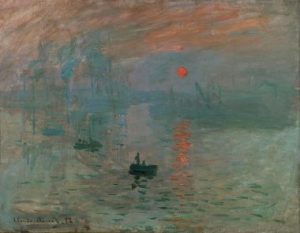
Image source: https://it.wikipedia.org/wiki/File:Monet_-_Impression,_Sunrise.jpg
Les Refusés
By the XIX century in France, the art scene was ruled by Académie des Beaux-Arts. The preservation of the traditional painting standards was the aim of the Académie: mythological and religious scenes, realistic portraits, and mitigated colors were treasured; landscape and everyday life were not. The Salon de Paris hosted The Académie art show every year. The artworks displayed were judged by traditional values, and style innovations were rejected.
In the early 1860s Monet, Renoir, Sisley, Degas, Cézanne, Zola, and other artists began meeting in Café Guerbois, headed by Édouard Manet, considered their mentor. They had in common a lack of interest in classicism and admiration for Realism and revolutionary art styles. Contemporary life scenes and landscapes, painted “en plein air” (outdoor) and with vivid colors, were their favorite subjects. Impressionists used to paint open air, without sketches, to imprint on the canvas the sunlight (or the moonlight) at that very moment.
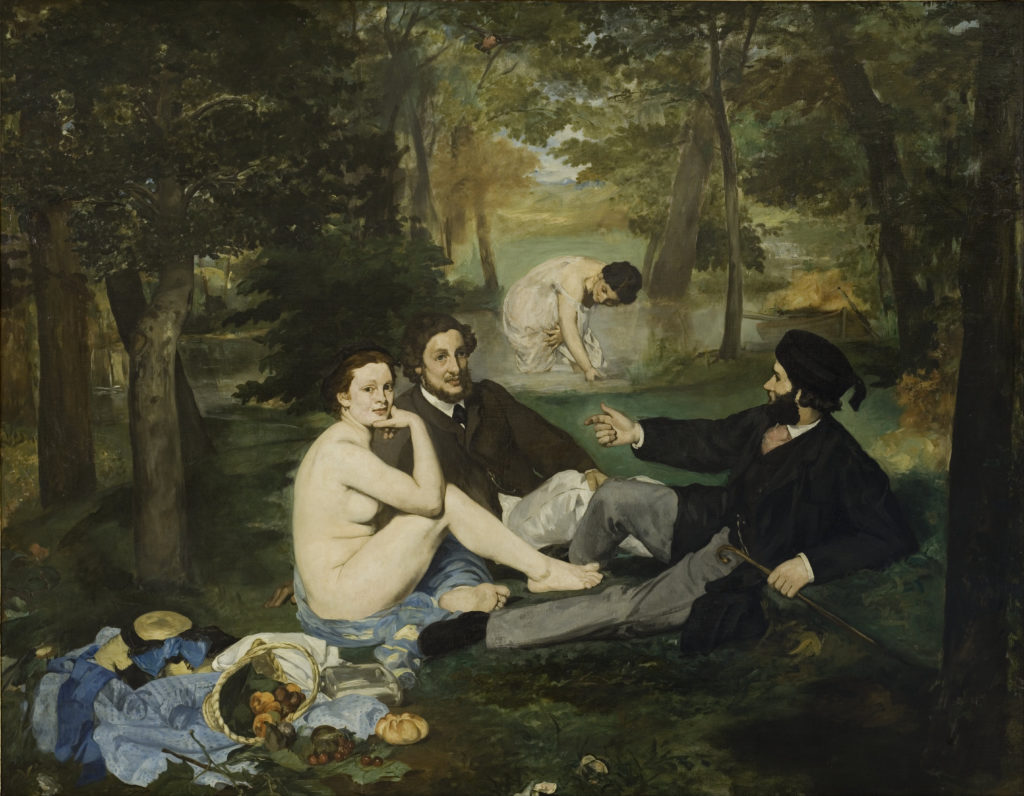
Édouard Manet “The Luncheon on the Grass (Le déjeuner sur l’herbe)” (1863).
Image source: https://en.wikipedia.org/wiki/File:Edouard_Manet_-_Luncheon_on_the_Grass_-_Google_Art_Project.jpg
After the unusual number of artworks rejected in that period by the Salon’s jury, such as “The Luncheon on the Grass (Le déjeuner sur l’herbe)”, Emperor Napoleon III organized the Salon des Refusés (Salon of the Refused). This decree signed a new tendency in art, and the salon des refuges attracted more visitors than the regular Salon.
Later artists organized a new independent exhibition. Their first, most-known art show took place in April 1874 at the studio of the photographer Nadar. The name “Impressionists” came from a sarcastic review wrote by Louis Leroy, based on a wordplay with the title of an artwork made by Monet “Impression, Sunrise (Impression, soleil levant)”.
This term became popular and was adopted by the artists themselves. Afterward, they gradually achieved fame and financial success, thanks to their eight exhibitions between 1874 and 1886.
Impressions of Color
Impressionists borrowed their techniques from French and international innovating art movements, including Romanticism and Realism, and gradually evolved their original style. These methods had been used by Delacroix, Coubert, Constable, Manet, but they were the first to use them all together. It has been possible thanks to new technology, premixed paints in tin tubes, and synthetic pigments, for instance. They intended to quickly capture the essence of the subject in the sunlight, not the details. This unique and personal representation of the subject was anticipated by J. M. W. Turner, John Constable, and other English painters. Vivid and thick strokes of paint were applied side by side, to underline the contrast between adjacent colors. Black paint was avoided, and darker tones were produced by mixing complementary colors. New layers of paint were applied on wet ones, in order to create softer edges and the play of light. For these reasons they used to paint in the evening, to emphasize shadow effects, usually blended with the blue of the sky as it is reflected onto surfaces.

Image source: https://it.m.wikipedia.org/wiki/File:Claude_Monet_-_Water_Lilies,_1917-1919.JPG
A new challange: the birth of photography
The boundary between the subject and background was relaxed by Impressionists so that the painting resembles a snapshot, a captured part of a larger reality.
In part, the birth of Impressionism can be considered as a reaction to the increasing popularity of photography, which seemed to devalue the artist’s skill in reproducing reality. The boundary between the subject and background was relaxed by Impressionists so that the painting resembles a snapshot, a captured part of a larger reality, not only in the receding lights of a landscape but in the daily lives of people. For this reason, artists sought other means of creative expression, by focusing on the very subjectivity in the conception of the image, the thing that photography had erased. The Impressionists pursued the expression of their perceptions of nature, rather than create detailed representations of it. Another major influence was Japanese ukiyo-e art prints (known as Japonism). The art of these prints contributed to the “snapshot” point of view and the unconventional compositions that became characteristic of Impressionism, with its typical angle.
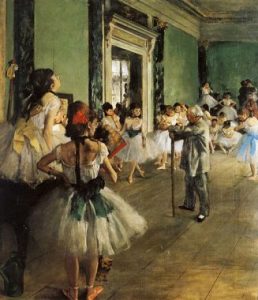
Image source: https://it.m.wikipedia.org/wiki/File:Degas-_La_classe_de_danse_1874.jpg
Major Impressionists
- Frédéric Bazille (1841–1870)
- Paul Cézanne (later broke away from the Impressionists) (1839–1906)
- Edgar Degas (despised the term Impressionist) (1834–1917)
- Armand Guillaumin (1841–1927)
- Édouard Manet (did not participate in any of the Impressionist exhibitions) (1832–1883)
- Claude Monet (the most prolific of the Impressionists and the one who most clearly embodies their aesthetic) (1840–1926)
- Camille Pissarro (1830–1903)
- Pierre-Auguste Renoir (1841–1919)
- Alfred Sisley (1839–1899)

Frédéric Bazille (1841–1870) 
Paul Cézanne (1839–1906)
Edgar Degas (1834-1917) 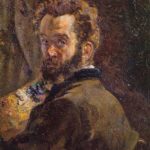
Armand Guillaumin (1841–1927) 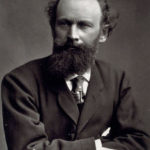
Édouard Manet (1832–1883) 
Claude Monet (1840–1926) 
Camille Pissarro (1830–1903) 
Pierre-Auguste Renoir (1841–1919) 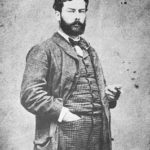
Alfred Sisley (1839–1899)
Image source:
https://commons.wikimedia.org/wiki/File:Fr%C3%A9d%C3%A9ric_Bazille,_c.-_1865.jpg
https://it.m.wikipedia.org/wiki/File:C%C3%A9zanne_au_chapeau_melon,_par_Paul_C%C3%A9zanne,_esquisse,_York.jpg
https://commons.wikimedia.org/wiki/Edgar_Degas#/media/File:Self_portrait_or_Degas_Saluant,_Edgar_Degas.jpg
https://en.wikipedia.org/wiki/File:Armand_Guillaumin,_selfportrait,_1878.jpg
https://commons.wikimedia.org/wiki/File:Ferdinand_Mulnier_-_Portrait_de_Edouard_Manet.jpg
https://commons.wikimedia.org/wiki/File:Claude_Monet_1899_Nadar_crop.jpg
https://commons.wikimedia.org/wiki/File:Pissarro-portrait-c1900.jpg
https://commons.wikimedia.org/wiki/File:Renoir,_Pierre-Auguste,_by_Dornac,_BNF_Gallica.jpg
https://en.wikipedia.org/wiki/File:Alfred_Sisley_photo_full.jpg
Info sources:
https://en.wikipedia.org/wiki/Impressionism
https://www.khanacademy.org/humanities/becoming-modern/avant-garde-france/impressionism/a/a-beginners-guide-to-impressionism
https://www.dummies.com/education/art-appreciation/the-birth-of-impressionism-manet-and-monet/
https://www.metmuseum.org/toah/hd/imml/hd_imml.htm
